
Free 26-Lane Electrophoresis & Western Blotting Layout Post-It Pad
Plan, track, and never miss another step.
Request Yours Now
On This Page |
Advantages of Fluorescent Western Blotting | The Fluorescent Way Article | Stain-Free Western Workflow | How to Do Fluorescent Westerns? |
Fluorescent western blotting is a method that is increasing in popularity because it addresses the need for accurate, quantitative determination of protein expression. The basic principle of the technique is that the level of fluorescence emitted by a fluorophore conjugated to the detection antibody is directly related to the level of protein expression. Unlike traditional western blotting detection methods, fluorescence is not subject to enzyme kinetics; making quantitation more reproducible. Furthermore, method development is simplified due to the linearity of the reaction. An additional benefit of the chemistry is blots can be cataloged for extended periods of time when stored properly.
By combining different antibody species with fluorophores of varying wavelengths, you can use fluorescent western blotting to create multiplex experiments. This will save you time and sample and allow you to answer more complex questions. Multiplexing also allows you to perform accurate analysis when there are only small shifts in molecular weight, e.g., post-translational modifications. By optimizing your experiments to include fluorescent multiplexing, you can avoid the errors commonly associated with stripping, reprobing, and cutting blots and ensure you are publishing quantifiable, reproducible results.
Advantages of Fluorescent
Western Blotting
Key benefits to using this technique include:
- More data
- Easier multiplexing
- Less sample used
- Fewer reagents used
- No stripping, reprobing,
or blot cutting - Easier method development
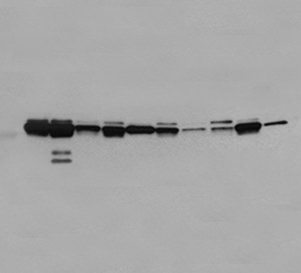
Chemiluminescence
1 Color
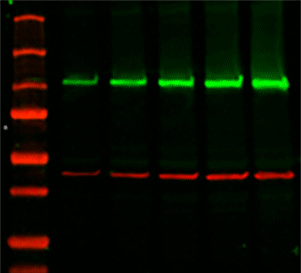
Traditional Fluorescence
2 Colors
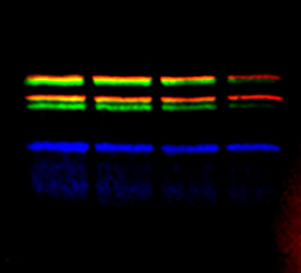
Bio-Rad Fluorescence
3 Colors + Total Protein Normalization
Why should you be concerned about stripping, reprobing, and cutting blots?
Reproducibility, poor data quality, and unpublishable results are just some reasons. Watch this video to learn why these traditional techniques are not optimal and how fluorescence western blotting and total protein normalization can help.

The Fluorescent Way: Why Start Fluorescent Western Blotting Now?
Recent advances in digital imaging technology and fluorescent western blotting reagents have resulted in better sensitivity and data quality.
Stain-Free Western Blotting
Stain-free western blotting allows you to quickly check electrophoresis and blot transfer quality and obtain truly quantitative western blotting results, updating traditional blotting techniques with innovative tools.
Faster Results. Better Data.
How to Do Fluorescent Westerns?
Fluorescent western blotting doesn't have to be difficult. Here are a few resources to get you started.

Fluorescent Blot Detection Guide
(PDF 994 KB)Fluorescent western blotting for chemiluminescence or colorimetric blot users.

Protein Blotting Guide
(PDF 7.9 MB)Western blotting basics, troubleshooting blots, and products all in one place.
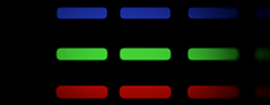
Fluorescent Tips
Helpful tips to optimize your protocol and enhance your western blotting experience.
Handy Tips for Fluorescent Western Blotting
Hover over each image for more information.
High background
Seeing high fluorescence background? Try specialized fluorescence blocking buffers, like those with casein. Also consider using LF-PVDF membranes.
Blown out standards
Standards too bright? Avoid using standards that contain pink bands as these fluoresce very readily. Try Precision Plus Protein All Blue or Precision Plus Protein Unstained Standards instead.
Pen and other artifacts
Don't want to see all the marks on your membrane? Mark the membrane with a pencil, not an ink pen.

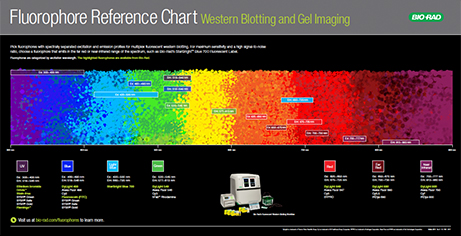
Light Up Your Lab
Get a free excitation/emission reference poster to make it easier to select the right fluorophore for your next experiment.
» Request a Free Fluorophore Poster
